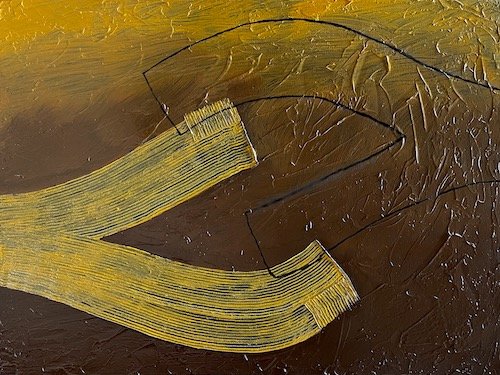I’ll wrap this up for now —
All paintings emphasize presence. There’s something there — even if it’s a white sheet of paper.
But a thoughtful viewer also thinks about absence:
Who and what are not shown, but are relevant to the scene?
What spaces lack visible marks or activity?
What could have been going on in those spaces?
In The Impossibility of Knowing, I’m trying to draw attention to absence. (You could do that via a large, blank canvas, but that’s been done.)
Two other artists in this year’s juried show at the Leonor Fuller Gallery at South Puget Sound Community College – on view now – also draw the viewer’s attention to presence and absence:
Stephanie Broussard’s Moonrise (above) visualizes a female presence in a skyscape of mountain and moon – a presence that is perhaps spiritual, real but unseen.
Lynette Charters’s Zarraga’s Naked Dancer Muse (above) from her The Missing Parents Series removes the actual painting of the two women in the Angel Zarraga’s 1909 painting The Nude Ballerina (below).
o By painting everything but exposed skin, and carefully using knotholes and grain in her wooden board surface, Charters substitutes and amplifies the missing paint.
o According to her artist’s statement,[1] she wants to emphasize “the lack of societal appreciation and wage equality for childbearing and stay-at-home parents.”
In sum, what’s impossible to know? Just about everything.
[1] https://spscc.edu/art-gallery/2022-2023-Exhibition-Season/SWJ/Lynette-Charters




